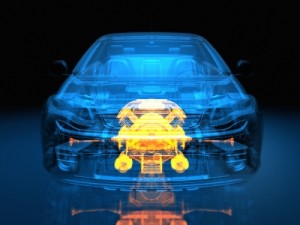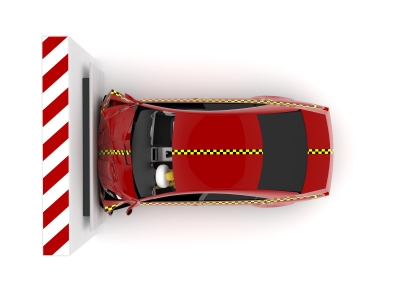 While record low fatality rates indicate that today’s cars are safer than ever, the latest crash test results confirm that some models still do a better job than others at protecting their occupants in a serious collision. And the best of them can help prevent their drivers from getting into accidents altogether.
While record low fatality rates indicate that today’s cars are safer than ever, the latest crash test results confirm that some models still do a better job than others at protecting their occupants in a serious collision. And the best of them can help prevent their drivers from getting into accidents altogether.
Audi A6: Blind-spot monitoring, front/rear collision warning and avoidance, driver and passenger knee-height airbags, night vision.
Audi Q5: Adaptive headlamps, all-wheel drive (AWD), blind-spot monitoring, collision warning and avoidance, rear- side impact airbags.
BMW 5 Series: Adaptive headlamps, blind-spot monitoring, collision warning, lane departure warning, night vision, side/top-view video monitor.
Infiniti EX: Blind-spot monitoring system, collision warning, lane departure warning, side/top-view video monitor.
Infiniti M: Adaptive headlamps, blind-spot monitoring, collision warning, lane departure warning.
Mercedes-Benz E-Class: Adaptive headlamps, attention assist, blind-spot monitoring, collision warning and avoidance, rear-side impact airbags, lane departure warning, night vision.
Mercedes-Benz ML-Class: Attention assist, blind-spot monitoring, collision warning and avoidance, driver knee-height airbag, lane departure warning.
Volvo S60: Adaptive headlamps, blind-spot monitoring, City Safety collision warning and avoidance, lane departure warning, pedestrian detection.
Volvo S80: Adaptive headlamps, blind-spot monitoring, City Safety collision warning, lane departure warning, pedestrian detection.
Volvo XC60: Adaptive headlamps, blind-spot monitoring, City Safety
collision warning, lane departure warning, pedestrian detection.
Source: Compiled by Consumer Insurance Guide Staff based on Insurance Institute For Highway Safety ‘Top Safety Picks’ with blind spot, lane departure and collision warning systems, in addition to extra safety features
Thanks in large part to advancements in automotive engineering and mandated safety features like airbags and electronic stability control (along with stricter seatbelt and impaired/distracted driving laws) traffic fatalities have dropped by 25 percent over the last five years. Unfortunately they still accounted for 32,788 deaths in 2010, according to the National Highway Traffic Safety Administration.
Fortunately, safety-minded car shoppers are able to choose from among a growing selection of models that are rated as ‘Top Safety Picks’ by the Insurance Institute for Highway Safety (IIHS). For 2012, a total of 69 cars, 38 SUVs and three pickups made the cut, which includes 18 new recipients.
“For the second year running a record number of models qualify as Top Safety Picks,” says IIHS president Adrian Lund. “It’s tough to win, and we commend auto manufacturers for making safety a top priority.”
To qualify as an IIHS Top Safety Pick, a car must garner top scores across the board for performance in front, side, rollover and rear-end crashes based on ratings determined by the IIHS’ evaluations. Vehicles are classified in each category on a basis of “good,” “acceptable,” “marginal” or “poor” performance.
For testing a car’s crashworthiness in a frontal collision, the IIHS performs “offset barrier” tests at 40 mph, using average-size male test dummies. Here, only part of a vehicle’s front end hits a barrier, which simulates the front of another vehicle. This test is said to provide a good indication of how well a vehicle’s structure will be maintained in a crash to protect its occupants, particularly against injuries to the lower extremities. Still, size matters here – all else being equal, a larger and heavier car will tend to protect its occupants better in a crash than will a smaller and lighter model.
The IIHS’ side-impact test approximates the front end of a full-size pickup truck or SUV striking the passenger’s side of a vehicle at 31 mph. The potential for injuries are measured using test dummies that approximate a small female or adolescent child. The IIHS uses smaller dummies here because its data suggests that women are more likely than men to suffer serious head injuries in a side impact collision.
Rollover protection ratings are based on roof crush tests. To earn a “Good” rating here, a vehicle’s roof must be able to withstand a force of four times its own weight before reaching five inches of crush depth. The IIHS estimates that such roofs reduce the risk of serious and fatal injury in single-vehicle rollovers by about 50 percent compared with those that merely meet the federal minimum requirement for crush resistance. A new federal standard for roof strength will phase with 2013 models.
While deaths from rear-end crashes are relatively low they’re one of the most common causes for whiplash-type neck injuries, which result from the sudden jerking forward of an occupant’s head and torso. The IIHS simulates rear-end collisions using a combination of static measurements and active crash-dummy testing to determine how well the vehicles’ seats and head rests support their occupants in a rear-end collision at 20 mph.












